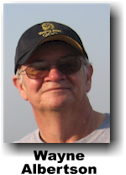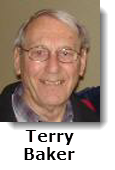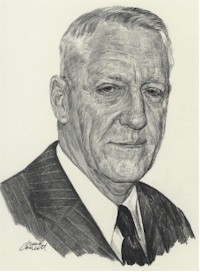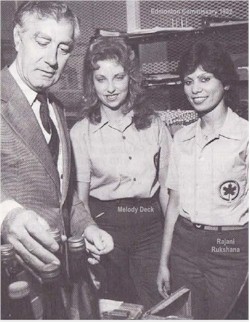|
|
 |
|
Terry Baker, co-founder of the NetLetter scours the internet for aviation related Trivia and Travel Tips for you, our readers, to peruse.
A reminder:
Flying to Mexico on business or on vacation? Then take note of this change when entering Mexico.
Effective immediately, please be aware of the following guidelines concerning the import of electronic devices for travellers to Mexico. Each traveller is permitted to bring ONE portable computing device (e.g., laptop, notebook, or iPad) without incurring an import fee. If passengers bring multiple devices, such as a laptop and an iPad, each will be treated as a separate item, which may result in additional fees. |
|
Allowed Items:
Exceeding these limits may result in customs duties starting at 19% of the item’s estimated value, with some cases reporting fees as high as 200%.
Source: interlinetravel.com
|
 Founded at Ottawa International by Canadian aviation pioneer Russell (Russ) Bradley and started operations as Bradley Flying School in 1946, changing the name in 1950 to Bradley Air Services, concurrent with a move to Carp Airport.
First Air started scheduled operations in 1973, between Ottawa and North Bay. This service was operated with an eight-seat passenger plane.
In 1995, First Air acquired Ptarmigan Airways, and in 1997 Northwest Territorial Airways (also known as NWT Air), both merged into First Air. In early 2015 First Air announced strategic agreements with Cargojet Airways and Summit Air. On April 21, 2015, First Air's Hercules, C-GUSI, flew the final civilian L382 flight in Canada, bringing to an end over 45 years of commercial Lockheed Hercules service. L382 Hercules operations in Northern Canada were begun during the 1960's by Pacific Western Airlines.
Editors' Note: On September 28, 2018 Makivik Corporation and the Inuvialuit Corporate Group (ICG) signed a definitive agreement to merge Canadian North and First Air. The new airline would use the new First Air livery, but would operate under the name "Canadian North". Following government approvals, the merger transaction was completed on July 10, 2019 and the airlines began operating a combined schedule on November 1, 2019. Operations were fully merged under a single operating certificate on May 26, 2021.
We asked photographer, Adrian Romang, for permission to use his photo of C-GUSI. He generously gave us permission and shared his personal memories of this aircraft.
|
 |
|
I keep C-GUSI in very good memory! Back in 2007 and 2008, I was in Yellowknife a few times on business and during one of those visits had the chance to ride along on C-GUSI during a supply flight to the Diavik Mine some 160 Miles Northeast of Yellowknife.
It was a night flight and quite impressive to say the least. The photo (above) was taken prior to that flight when the aircraft was being prepared and loaded at minus 30 degrees C.
Being a freelance aviation journalist and photographer, I actually wrote a report about this experience in one of the Swiss aviation magazines (unfortunately, the report is in German).
FYI, I'm a Swiss helicopter pilot / mechanic working as international technical manager for foundation Helimission. We operate eight AS-350 helicopters all over the world, which is why I have a chance to travel a fair bit.
Everything connected to Canadian aviation is of interest to me, I actually have a few Canadian friends sharing the same passion. Gary Vincent, a former Air Canada B-767 pilot is one of them. Not sure if he is on your distribution list, sometimes the aviation world is small.
Adrian Romang
Editors' Note: Gary Vincent is a NetLetter subscriber and has frequently granted his permission to use his photographs. We are happy to say that Adrian Romang has also joined our subscriber list.
|
 for the latest posts at the Air Canada Media Centre. for the latest posts at the Air Canada Media Centre. |
 Click the logo to open the Air Canada YouTube channel. Click the logo to open the Air Canada YouTube channel. |
 |
|
1947, July 1 -
Trans-Canada Air Lines began new DC-3 services with stops at Sault Ste. Marie and Port Arthur/Fort William, and a new service to Medicine Hat and Swift Current.
Also, on July 1st, a new TCA route linked Winnipeg, Saskatoon and Edmonton.
Source: CAHS Regina Chapter archives
|
|
Found in 'Horizons' magazine |
|
Issue dated September 1982
|
|
While in Edmonton, Pierre Jeanniot, Executive Vice President and Chief of Airline Operations, took time out to discuss the Air Canada Challenge with staff at various company locations. Here Jeanniot takes a coffee break at Maintenance. Seated, from the left, are: Don Harbarenko, Mechanic; Jeanniot; Mechanics Bob Kozak, Hideo Okuchi, Lyle Sorenson and Nester Malowany.
Standing, from the left, are: Mechanic W. Jack Ewing and John Linstrom, Ramp Equipment Maintenance Foreman.
|
 |
|
At the Commissary Jeanniot is shown with Melody Deck and Rajani Rukshana, right, Commissary Attendants.
|
|
At the gate, Jeanniot chats with, from the left: Passenger Agents Samir Ghossein, Lindy Brown and Marg McLean.
|
 |
|
Issue dated October 1982
|
|
Montreal heads of competition at soccer tourney.
A record number of teams participated in the seventh annual System Soccer Tournament held September 17 and 18, 1982. Teams from Vancouver, Edmonton, Calgary, Winnipeg, Toronto, Montreal, St. John's and London, England converged on Montreal with 130 players and guests turning the Airport Hilton Hotel into their tournament headquarters for the weekend. In the final match Montreal edged out Toronto in a 6 to 5 scoring spree.
The 1982 System Soccer champs from Montreal are, kneeling from the left: Jim Ryan, Victor Cerpa, Bill Badra, Cam McGowan, Harry Van Zyl, Greg Iwanivk, Bill Dickson and Gunter Voss.
Standing are: Ian Tyer, Adam Ritchie, Rui Ribeiro, Dave Groom, Martyn Reed, Jim Coote, Howie Thompson, Bill McLelland and Carlos Araujo.
Absent were: Dave Kelly, Angel Matamal and Conrad Aleong.
|
 |
|
Issue dated November 1982
|
|
It's something to crow about.
Air Canada became the first carrier outside the United States and the first airline in Canada to take delivery of the B-767. Our first aircraft arrived in Montreal on October 30, 1982. First flight makes a big impression. A number of employees representing a cross-section of occupations were invited to participate in the first delivery flight as guests of the company, and for them, it was an event to remember.
Shown with President Claude Taylor in front of one of the B-767's huge engines are, from the left: Shirley Campbell, Secretary, Halifax; Larry Murch, Station Attendant, Toronto; Doug Slade, Cargo Agent, Vancouver; Taylor; Pierrette Venturini, Passenger Agent, Montreal: Marc Lefebvre, Certificated Avionics Technician, Dorval; and Marlene Godber, Flight Attendant, Calgary.
|
 |
|
The cabin crew members who worked the delivery flight of the B-767 posed with President Claude Taylor during a pause in their duties.
From the left, back row are: Flight Attendants Jurgen Odefey and Marlene Godber; Taylor and Flight Attendant Cory McAdam.
In the foreground are: Leonard Lafleur, In-Charge Flight Attendant and Flight Attendant Helen Reagh.
Except for Leonard, the other flight attendants formed part of the galley design committee who worked closely with the manufacturer during the construction phase.
|
 |












